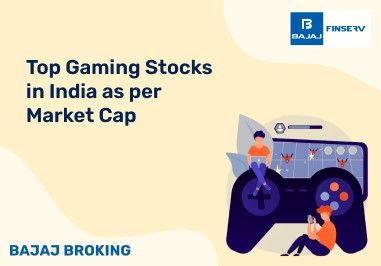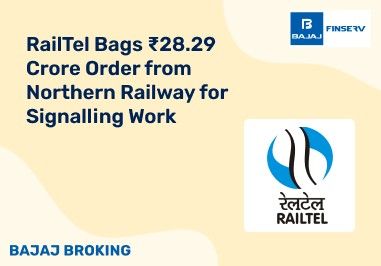What is SENSEX?
SENSEX, short for the Stock Exchange Sensitive Index, is the benchmark stock index of the Bombay Stock Exchange (BSE) in India. It is a barometer of the Indian economy, monitoring the performance of 30 major and highly traded stocks on the BSE. The SENSEX index reflects the overall health of the stock market and provides valuable insights for investors by indicating trends in the broader economy. It was introduced in 1986 with a base value of 100, and since then, it has become a key reference point for tracking market movements.
SENSEX Meaning: The SENSEX helps investors measure the success or decline of the stock market, and it is calculated using the free-float market capitalization method. This method ensures that only shares available for public trading are considered. When the SENSEX rises, it means the underlying stocks are performing well, signaling confidence in the market. Conversely, a fall in the SENSEX indicates caution or pessimism.
Investors can use the SENSEX Index to track the economic performance of the country as well as make informed investment decisions. Companies listed on the SENSEX must meet several criteria, including market capitalization, liquidity, and sector representation, ensuring that the index represents a diverse cross-section of the Indian economy.
How Does the SENSEX Work?
The SENSEX, or Stock Exchange Sensitive Index, is India’s oldest stock market index, created to measure the overall performance of the country’s economy through the stock prices of the top 30 companies listed on the Bombay Stock Exchange (BSE). Established in 1986, the SENSEX has become the go-to indicator of market sentiment and economic trends, not only in India but also for international investors. The SENSEX reflects the health of the Indian stock market by monitoring the price movements of these prominent companies, which are selected from various sectors to offer a balanced representation of the country’s economic activities.
What is the SENSEX Index and Why is it Important?
The SENSEX Index serves as a barometer of the Indian stock market. It is widely used as a benchmark to gauge the performance of India's economy. By tracking the top 30 companies, the SENSEX provides investors and analysts with insights into the general economic health and investor confidence. These companies represent diverse industries such as technology, finance, healthcare, and manufacturing, making the index a good representation of the overall market. When the SENSEX rises, it signals a period of growth and optimism among investors, while a decline in the index may indicate caution or concerns over economic or global conditions.
One of the primary reasons the SENSEX is important is its ability to reflect broad market trends. It is an indicator used by both institutional and retail investors to assess the performance of their portfolios relative to the broader market. It also plays a critical role in helping foreign investors understand the Indian economy. Investors globally look to the SENSEX to determine the level of confidence in the Indian market and make informed decisions about investing in the region.
How is the SENSEX Calculated?
The SENSEX is calculated using the free-float market capitalization method. Free-float refers to the portion of a company’s shares that are available for trading in the open market, excluding those held by insiders or other restricted groups. This calculation method was adopted in 2003 to make the index more reflective of market realities, as it provides a more accurate picture of the shares that are actively traded.
The formula for calculating the SENSEX is:
SENSEX = (Free-float market capitalization of 30 companies / Base market capitalization) * Base value
The base year for the SENSEX is 1978-79, and the base value is 100. This methodology ensures that even when the companies in the index change, the SENSEX remains comparable over time. In this context, market capitalization is defined as the total value of a company’s shares based on its current share price. The free-float market capitalization, therefore, refers to the market value of shares that are publicly traded and available for investors to buy or sell.
The Role of the Free-Float Method
Before 2003, the SENSEX was calculated using a full-market capitalization method, which considered the total market value of all of a company's shares, regardless of whether they were actively traded or not. However, this method was found to be less reflective of market conditions because it did not take into account the liquidity of a company’s stock. The adoption of the free-float capitalization method marked a significant shift. This method adjusts the SENSEX based on the liquidity of stocks, which is important for accurately reflecting the amount of shares that investors are actively buying and selling.
The free-float factor is a critical component of this calculation. It represents the proportion of a company’s shares that are available for trading relative to its total shares. For example, if a company has 100 shares in total, and 80 of these shares are available for public trading, the free-float factor would be 0.8. This factor is then applied to the market capitalization to determine the weight of that company in the SENSEX.
How Are Companies Selected for the SENSEX?
The selection of companies included in the SENSEX Index follows strict criteria set by the S&P BSE Index Committee. To ensure that the SENSEX remains representative of the Indian economy, companies must meet the following requirements:
Listing on the BSE: Only companies listed on the Bombay Stock Exchange are eligible for inclusion in the SENSEX. This ensures that the index represents the core of India’s stock market.
Large or Mid-Sized Companies: Companies must have a significant market capitalization to be considered. Typically, only large-cap or mid-cap companies make it into the index, ensuring that the companies are financially strong and well-established.
Liquidity: The stocks included in the SENSEX must be highly liquid, meaning they are frequently traded in the market. This liquidity ensures that the index reflects real-time market conditions and investor sentiment.
Strong Core Business: Companies must generate a substantial portion of their revenue from their core operations. This requirement ensures that the companies in the index are stable and well-positioned within their industries.
Sector Representation: The SENSEX aims to maintain a balance across various sectors of the economy, such as finance, technology, healthcare, and energy. This sectoral balance ensures that the index offers a comprehensive picture of the Indian economy.
What Does the SENSEX Indicate?
The SENSEX is more than just a collection of stock prices—it serves as a snapshot of the country’s economic health and investor sentiment. When the SENSEX rises, it indicates a period of growth and optimism. Investors are willing to pay higher prices for stocks because they believe that the companies are performing well and that the economy is on an upward trajectory.
On the other hand, when the SENSEX declines, it suggests a period of uncertainty or pessimism. This could be due to economic issues, geopolitical tensions, or even global market trends. For example, during the 2008 global financial crisis and the 2020 COVID-19 pandemic, the SENSEX saw significant declines as investor confidence plummeted.
What is SENSEX?
The SENSEX, or Stock Exchange Sensitive Index, is the benchmark stock index of India, representing the 30 largest and most actively traded companies listed on the Bombay Stock Exchange (BSE). Launched in 1986, it is a key indicator used to track the performance of the Indian stock market and is a measure of the overall health of the economy. The SENSEX index is calculated using the free-float market capitalization method, where only shares available to the public for trading are considered. This method provides a clear and accurate picture of market conditions.
The SENSEX meaning can be understood by considering it as a pulse of the Indian economy. It reflects investor sentiment by capturing stock price movements of major industries, including finance, technology, energy, and manufacturing. A rise in the SENSEX suggests market optimism, while a fall indicates economic concerns. As a result, the SENSEX is a critical tool for investors and analysts in evaluating both the short-term and long-term performance of the Indian stock market.
By regularly monitoring the SENSEX index, investors can make informed decisions about their investment strategies, ensuring they stay aligned with prevailing market trends and economic conditions. Furthermore, the index acts as a benchmark for various mutual funds and exchange-traded funds (ETFs) that aim to replicate the performance of the top companies listed on the BSE.
How to Invest in SENSEX?
Investing in SENSEX, the benchmark index of the Bombay Stock Exchange (BSE), is a great way to gain exposure to India’s top 30 companies. There are multiple ways to invest in SENSEX:
Direct Stock Investment: You can buy shares of individual companies that constitute the SENSEX directly via a Demat and Trading Account. This approach requires research and active management but allows investors to tailor their portfolio to the SENSEX Index.
Index Funds: These funds mimic the performance of the SENSEX by holding shares in the same companies in the same proportion. This is a passive investment method that tracks the overall performance of the SENSEX without needing active management.
Exchange-Traded Funds (ETFs): SENSEX ETFs are traded on the stock exchange like shares and replicate the index's performance. These offer high liquidity and low costs, making them ideal for investors looking for a flexible entry into the SENSEX Index.
Mutual Funds: Many mutual funds focus on large-cap companies, which often include SENSEX constituents. These funds are professionally managed and can provide broader diversification, albeit with slightly higher fees.
Investing in SENSEX allows you to benefit from the growth of India’s leading companies. It’s an excellent option for both seasoned investors and beginners seeking exposure to stable and financially strong businesses. Whether through direct stock purchases, index funds, or ETFs, you can align your portfolio with India’s economic growth.
Milestones of SENSEX India
Timeline
| Events
|
Early 90s to the end of the 20th century
| Since its inception, SENSEX reached the 1000-point milestone on 25th July 1990, closing at 1001.
In 1991, the introduction of several liberal economic reforms contributed to the SENSEX surpassing 2000 points for the first time in 1992.
In 1992, the Harshad Mehta scam caused a massive sell-off of SENSEX shares.
In 1999, the index crossed the 5000-point mark for the first time, ushering in the new century.
|
Early 21st century to mid-2000s
| The IT boom pushed the index to cross 6000 points in 2000.
In 2004, the index briefly touched 6026.59 points.
2005 saw the SENSEX cross 7000 points due to significant growth in the Reliance group. By 2007, it leaped to 20,000 points.
|
2010s to present
| Post the 2008 financial crisis, the SENSEX steadily recovered and crossed 21,000 points in 2010.
By 2019, the index breached the 40,000 mark.
|
SENSEX and Your Investments
The SENSEX plays a critical role in shaping your investment decisions. As India’s benchmark index, it reflects the performance of the 30 most financially robust companies listed on the Bombay Stock Exchange (BSE). When the SENSEX rises, it signals positive market sentiment, making it an ideal time for investors to consider increasing their holdings in large-cap stocks.
Investing in the SENSEX Index offers a balanced portfolio exposure across sectors such as technology, finance, and manufacturing. You can invest in SENSEX through Index Funds, ETFs, or by purchasing individual stocks that make up the index, helping diversify and minimize risks.
Major Plunges in SENSEX Stocks
The SENSEX has witnessed several major declines over its history:
On 21st January 2008, the index dropped by 1408 points due to the global financial crisis, marking its largest single-day fall.
In 1992, the Harshad Mehta scam led to massive sell-offs and a sharp plunge in stock prices.
The COVID-19 pandemic also triggered a significant decline in March 2020, reflecting global market uncertainties.
These events serve as a reminder of the volatility of the stock market and the need for long-term strategies to navigate such fluctuations.
What is Sensex?
The Sensex, short for the Sensitive Index, is a stock market index in India. To put it simply, it’s like a giant scoreboard that tracks the performance of some of the biggest and most influential companies listed on the Bombay Stock Exchange (BSE). The companies listed on the Sensex are referred to as “blue-chip” companies because they are known for their stability, large market capitalization, and widespread presence in the Indian economy.
Why Does Sensex Matter?
The Sensex is not just a bunch of numbers; it’s a reflection of the Indian economy and provides valuable insights into how businesses are performing. Here’s why it matters:
- Economic Barometer: Think of the Sensex as a barometer that measures the health of the Indian economy. When the Sensex rises, it suggests that businesses are generally doing well, which often correlates with a thriving economy.
- Investment Indicator: Investors, both big and small, use the Sensex as a benchmark to gauge how their investments are performing. When the Sensex goes up, it’s a good sign for investors as it indicates growth in the market.
- Confidence Booster: High Sensex numbers often boost investor and consumer confidence. When people see the stock market doing well, they tend to feel more positive about the economy, which can lead to increased spending and investments.
Additional Read: Nifty 50 Guide
How is Sensex Calculated?
The Sensex is not a simple average of all the stock prices; it’s a bit more sophisticated than that. Let’s break down various terms:
- Free-float Market Capitalization: Free-float market capitalization only considers the shares that are available for trading in the market, excluding shares held by promoters, government, and other entities that are not actively traded.
- Weighted Methodology: In Sensex, companies are not given equal weight. The bigger companies have a more significant impact on the index. So, if a large-cap company’s stock price goes up, it has a more substantial effect on the Sensex compared to a small-cap company.
In simple terms, Sensex gives more importance to the big players and how they are performing in the market.
The Sensex Components
The Sensex comprises 30 carefully chosen blue-chip stocks. These stocks belong to various sectors, making the index diverse and representative of the broader market. Some of the sectors typically represented in the Sensex include finance, information technology, healthcare, and consumer goods.
Some of the well-known companies on the Sensex include Tata Consultancy Services (TCS), Reliance Industries, HDFC Bank, and Infosys. These companies are the giants of the Indian stock market and are often used as indicators of its overall performance.
Sensex Performance and What It Tells Us
The Sensex is a daily barometer of the Indian stock market, and its performance can tell us a lot about the current financial landscape. Here are a few key insights we can gain from Sensex movements:
- Bull Market vs. Bear Market: When the Sensex is on an upward trajectory, it indicates a bull market, characterised by rising prices and optimism. Conversely, a declining Sensex signifies a bear market, marked by falling prices and pessimism.
- Investor Sentiment: The Sensex can reflect investor sentiment. Positive news, such as strong corporate earnings or economic growth, can drive the Sensex higher. On the flip side, negative news can lead to a decrease in the Sensex.
- Market Volatility: Sharp fluctuations in the Sensex can indicate increased market volatility. This could be due to global events, economic data releases, or company-specific news.
- Economic Health: A consistently rising Sensex may suggest a healthy and growing economy, while a declining Sensex can be a warning sign of economic troubles.
- Long-Term Trends: By analysing the historical performance of the Sensex, investors can identify long-term trends in the Indian stock market.
Sensex and Your Investments
If you’re an investor or thinking about entering the world of investing, it’s important to understand how the Sensex can impact your financial decisions. Here’s what you need to know:
- Benchmark for Performance: Many mutual funds, exchange-traded funds (ETFs), and investment portfolios are benchmarked against the Sensex. If a fund consistently outperforms the Sensex, it can be a good indicator of strong fund management.
- Diversification: The Sensex represents a diverse range of sectors. Diversifying your investments across these sectors can help reduce risk and increase the potential for returns.
- Volatility Awareness: Be prepared for market volatility. The Sensex can experience sharp fluctuations, and it’s important not to make impulsive investment decisions based solely on short-term movements.
- Long-Term Perspective: Investing in the stock market, whether through individual stocks or mutual funds, is generally a long-term endeavour. Don’t get swayed by daily or weekly Sensex movements; instead, focus on your long-term financial goals.
Wrapping Up
In a nutshell, the Sensex is a significant indicator of the Indian stock market’s health and performance. It represents a carefully selected group of top companies, making it a valuable tool for investors and economists alike. By keeping an eye on the Sensex and understanding its movements, you can make more informed investment decisions and gain insights into the overall economic landscape of India.
So, the next time you see a news headline about the Sensex hitting a new high or low, you’ll know that it’s not just a number but a reflection of the complex and dynamic world of finance and economics.
Disclaimer: Investments in the securities market are subject to market risk, read all related documents carefully before investing.
This content is for educational purposes only.
For Research Disclaimers Click Here: https://bit.ly/3Tcsfuc
Sources: https://www.business-standard.com/about/what-is-sensex













